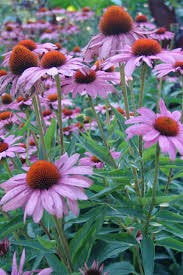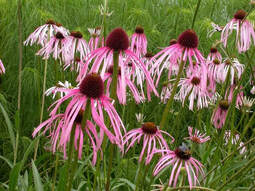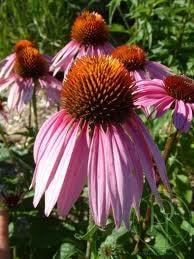|
*This paper was originally written for my course work while gaining my certification in Clinical Herbalism with the school Naturally Healthy, Calhoun, LA. It was written in 2013 and reflects my study at the time.*
Echinacea is a popular and much used herb. It is celebrated for its antiviral, antibacterial and immune-enhancing properties. Echinacea was especially popular in the 18th and 19th century, but its use declined in the United States with the discovery of antibiotics. We are seeing a resurgence of its use in the Americas, although its popularity never waned in Europe, especially Germany. Most of the research on Echinacea has been carried out in Germany, with favourable results. American studies have not been as positive, but these studies have been criticised. Apparently, the American studies were not properly controlled, making no account for the quality of Echinacea product tested, nor the parts of the plant or even the species of Echinacea used. There are three main Echinacea species used in medicine – Echinacea purpurea, Echinacea angustifolia and Echinacea pallida. Echinacea spp in general is immunostimulatory, anti-inflammatory, anti-bacterial and vulnerary. However, each of the three species of Echinacea have slightly different properties. The roots and tops of E. angustifolia and E. purpurea and the tops of E. pallida contain alkylamides (stimulates airway macrophages and the production of cytokines to help fight off infection). E. Purpurea contains chicoric acid (stimulates phagocystosis), and E. angustifolia contains quite a bit more echinacoside (anti-inflammatory and encourages wound healing) than the other two species. The three Echinceas compliment each other. It is therefore recommended to use a treatment that includes Echinacea purpurea, Echinacea pallida and Echinacea angustifolia. There have been issues with treatments being labelled incorrectly, and strengths of the herb varying considerably from product to product. It is wise to purchase Echinacea spp (and all herbs) from a reputable dealer.
0 Comments
Leave a Reply. |
Emilie
Clinical herbalist. Mother. Teacher. Ever student. Archives
February 2022
Categories
All
|




 RSS Feed
RSS Feed